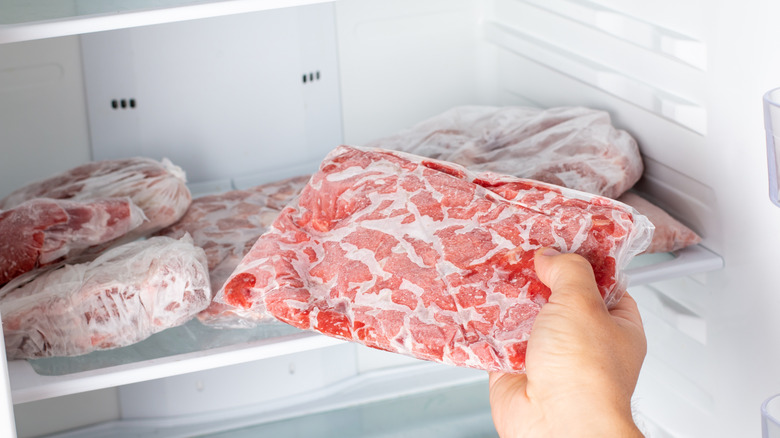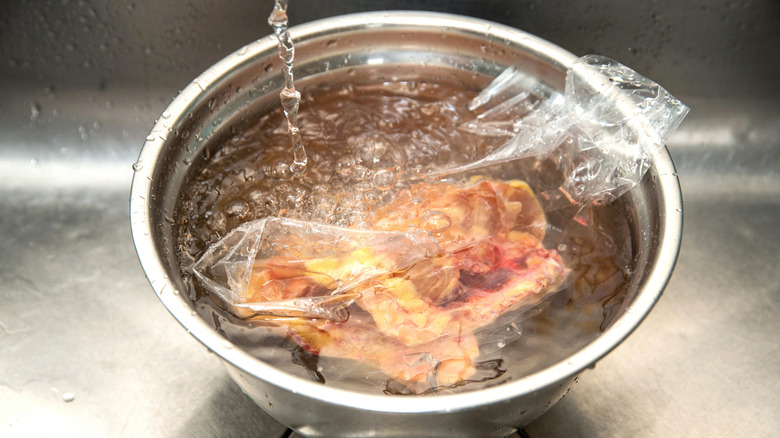Why You Should Never Thaw Frozen Protein In The Microwave
Defrosting meat can be a tricky business. If you've ever forgotten to remove chicken from the freezer the night before, you may be wondering if you can just pop it into your microwave, push that defrost button, and keep it moving. This may appear to be a no-brainer, but it's actually not the best — or safest — way to get the job done. While you may be aware that you should think twice before defrosting food in the microwave, have you ever wanted to know why thawing meat this way is a bad idea?
While the USDA says that thawing in the microwave is safe, it does come with some considerations. For example, because microwave thawing can partially begin to cook your meat since it's heating it up so quickly, your food can enter the "danger zone" of temperatures — which is when meat is between 40 and 140 degrees Fahrenheit and bacteria spread quickly. Because the microwave blasts heat, the outside can be in this zone while the center is still frozen. Due to this, the USDA makes it clear that any meat that's defrosted using the microwave needs to be immediately cooked, and that protein that's been thawed this way should always be fully cooked before refreezing.
It's also important to note that the microwave can change meat's texture due to it losing a ton of moisture in the process. This can cause parts of the meat (especially the areas that cook a bit while defrosting) to become tough and chewy.
Better ways to defrost protein
Of course, it's a shame that the worst way to defrost steak is also the easiest, but it's always better to err on the side of caution when it comes to meat. Now that you know what not to do, it's crucial to learn how to thaw frozen protein. In general, the best and safest way to defrost meat is to leave it in the refrigerator overnight or until it's fully defrosted. This does take a decent amount of planning ahead, so while it's the best route, it isn't always a convenient option.
If you have to defrost meat within the same day, the second best method would be the cold water method, which the USDA describes as adding frozen meat that's enclosed in a leak-proof bag (like a Ziploc bag) to a bowl and submerging it in cold water. When defrosting this way, you have to change the water every 30 minutes so that the meat continues to defrost. Depending on how much you're thawing, this could take anywhere from 30 minutes to a few hours to fully work.


